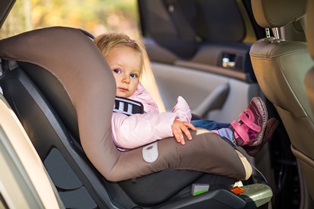Car Seat Defects Endanger Little Lives
Motor vehicle accidents are a leading cause of death for infants and young children in the United States. Strapping your child into a properly installed car seat that's suitable for their height and weight can help keep your little one safer during transit, which is why all 50 states require infants and children to be properly restrained whenever the vehicle is in motion.
to be properly restrained whenever the vehicle is in motion.
Parents often spend significant time and energy researching car seat safety in order to choose the right restraint for their child. When made and used correctly, car seats are extremely effective at keeping children safe in the event of a car accident. According to a report by the National Highway Traffic Safety Administration (NHTSA), car seats can reduce the risk of fatal accidents by up to 71 percent for infants younger than one-year-old and by up to 54 percent for toddlers aged one to four years old.
Many parents trust that the car seat they purchased will keep their infant or toddler safe from harm. However, if the car seat has a hidden design flaw or manufacturing defect that prevents the restraint from functioning as intended, it can increase a child's chance of serious injury or death. If a defective car seat injured your infant or child, here's what you need to know.
Common Car Seat Defects
Car seat defects can be caused by flaws in the design or mistakes made during the manufacturing process. Some of the most common types of car seat defects include:
- Low-quality, highly flammable materials: Car seat straps or covers made from poor-quality materials can tear or catch fire in an accident, putting the child at risk for serious burn injuries.
- Faulty latches or buckles: Improperly installed latches or buckles that have too much give or are difficult to undo may cause the infant or toddler to be ejected, or hamper rescue efforts.
- Defective adjusters: Adjusters are designed to hold the car seat's straps at the appropriate adjustment. When adjusters are faulty, they may allow the straps to become excessively loose or overly tight.
- Weak or broken frame: If a car seat's frame is cracked, broken, or made of low-quality materials it can prevent it from absorbing impact in the event of a crash.
- Defective handles: A defective handle may bend or break when the car seat is carried, potentially subject the infant to a fall injury.
In addition to design flaws and manufacturing errors, car seat defects can also be caused by defective materials, and insufficient shipping and handling practices.
Liability in Defective Car Seat Cases
When a defective car seat injures a child, the issue of liability can be complex. If the injury occurred due to a flaw in the car seat's design, the manufacturer who developed the product may potentially be liable for damages. However, if the injury was due to a defective component or improper factory assembly, the manufacturers who headed those stages of production could be held responsible. Additionally, if a distributor or retailer knowingly sold a damaged or defective car seat, or one that was missing essential safety components, they might be found at fault for any injuries that occur as a result.
Car Seat Recalls
Manufacturers issue recalls for car seats more often than most people realize. In fact, a staggering 10 million car seats were recalled by their manufacturers between 1998 and 2001. Continuing to use a recalled product—whether knowingly or unknowingly—can be incredibly dangerous. Consumer safety groups estimate that hundreds of infants have been injured by products that had already been recalled by their manufacturers.
To see if their child's car seat has been recalled, parents can search its make and model number on the NHTSA's safecar.gov website.
Do You Need a Product Liability Lawyer?
If a defective car seat injured your child, the experienced attorneys at the Morris James Personal Injury Group can help you pursue the compensation and justice you deserve. Contact the Morris James Personal Injury Group today to schedule a free, no-obligation case review.
Related Links:






